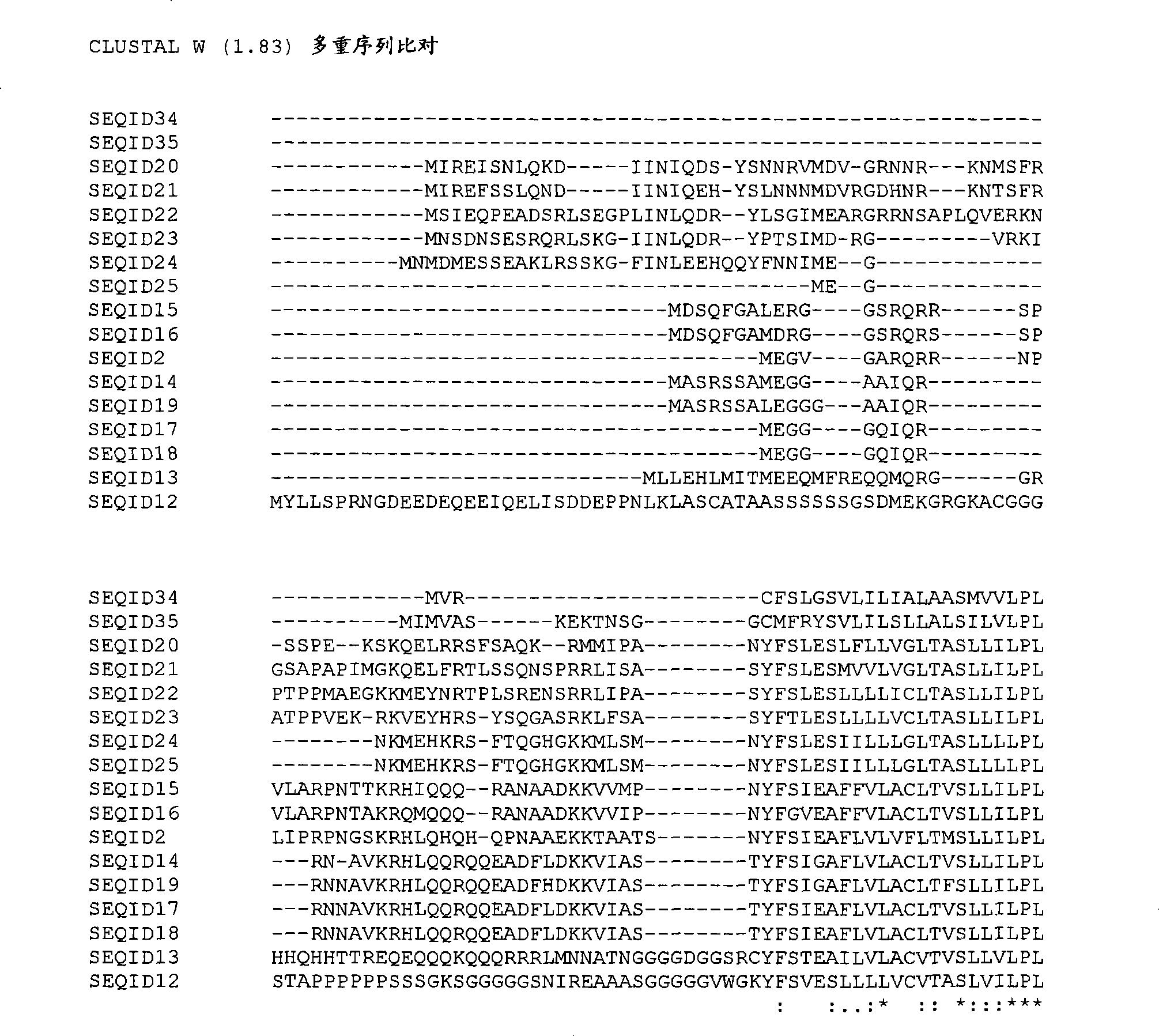Plants having improved growth characteristics and methods for making the same
A technology for plants and plant cells, applied in the field of molecular biology, can solve the problems that monocotyledonous plants and plants without biomass increase cannot be used so easily.
- Summary
- Abstract
- Description
- Claims
- Application Information
AI Technical Summary
Problems solved by technology
Method used
Image
Examples
Embodiment
[0764] The invention will now be described with reference to the following examples for illustrative purposes only. The following examples are not intended to completely determine or otherwise limit the scope of the present invention.
[0765] DNA manipulation
[0766]Unless otherwise indicated, according to (Sambrook (2001) Molecular Cloning: a laboratory manual, 3rd edition, Cold Spring Harbor Laboratory Press, CSH, New York) or Ausubel et al. (1994), Current Protocols in Molecular Biology, Current Protocols ( http: / / www.4ulr.com / products / currentprotocols / index.html) 1 and 2 The standard method described in the volume carries out recombinant DNA technology. Standard materials and methods for plant molecular manipulation are described in Plant Molecular Biology Labfax (1993) edited by R.D.D. Croy published by BIOS Scientific Publications Ltd (UK) and Blackwell Scientific Publications (UK).
[0767] Statistical analysis
[0768] A two-way ANOVA (analysis of variance) corrected f...
Embodiment A
[0770] Example A: SYR
Embodiment 1
[0771] Example 1: Identification of sequences related to SEQ ID NO: 1 and SEQ ID NO: 2
[0772] Using database search tools such as Basic Local Alignment Tool (BLAST) (Altschul et al. (1990) J. Mol. Biol. 215: 403-410; and Altschul et al. (1997) Nucleic Acids Res. 25: 3389-3402), in the sequence maintained by the Entrez Nucleotide Database of the National Center for Biotechnology Information (NCBI), identify the sequence related to SEQ ID NO:1 (full-length cDNA, EST or genomic sequence) and / or the sequence related to SEQ ID NO: 2 related protein sequence. Generally, BLAST programs are used to find regions of local similarity between sequences by comparing nucleic acid or polypeptide sequences with sequence databases, and by calculating the statistical significance of matches. Apply the TBLASTN algorithm to the polypeptide encoded by nucleic acid SEQ ID NO:1, use the default settings, and turn on the filter to ignore low-complexity sequences. The output window of the analysis is a ...
PUM
 Login to View More
Login to View More Abstract
Description
Claims
Application Information
 Login to View More
Login to View More - R&D
- Intellectual Property
- Life Sciences
- Materials
- Tech Scout
- Unparalleled Data Quality
- Higher Quality Content
- 60% Fewer Hallucinations
Browse by: Latest US Patents, China's latest patents, Technical Efficacy Thesaurus, Application Domain, Technology Topic, Popular Technical Reports.
© 2025 PatSnap. All rights reserved.Legal|Privacy policy|Modern Slavery Act Transparency Statement|Sitemap|About US| Contact US: help@patsnap.com



